Art World
10 Young Female Artists’ Perspectives on Femininity Today
These women offer new perspectives on the female experience.
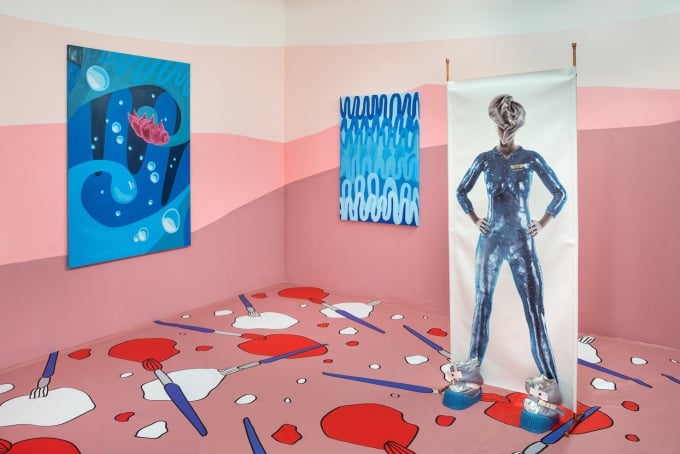
These women offer new perspectives on the female experience.

Alyssa Buffenstein

Everyone knows that being a woman isn’t all sugar, spice, and everything nice. And now, in the face of the US president-elect’s a shameless misogyny, it’s ever more important for women to unapologetically assert themselves through their work.
Over the last few years, a new generation of female artists have been dissecting their experiences to present feminism—and femininity—in new ways. Mediated by the internet, some artists embrace their yonic forms, whether up-close-and-personal or in a more O’Keeffe-ian sense. Others react to stereotyping and marketing directed at women, while advocating for a more fluid view of gender than the traditional binary.
In some cases, what was once the zenith of misogyny is now reclaimed as the pinnacle of femme freedom. And through art, some women can even begin to find healing and retribution against sexual violence.
While certainly not inclusive of all women, this list of 10 offers a small sampling of art created by women about their experiences, obstacles, desires, anxieties, dreams, and nightmares.
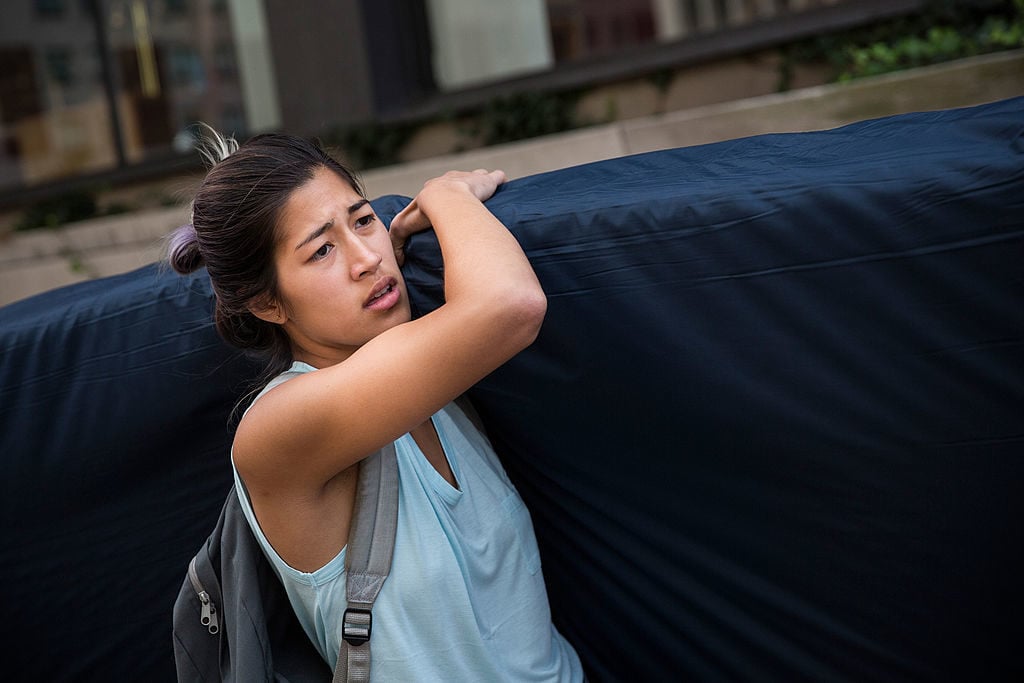
Emma Sulkowicz carries a mattress in protest of the university’s lack of action after she reported being raped during her sophomore year. Photo by Andrew Burton, courtesy Getty Images.
1. Emma Sulkowicz
The recent Columbia University grad went viral last year for her senior thesis project, Carry That Weight (2014-15), a durational performance in which she carried a standard-issue dorm mattress around with her on campus until justice was served to her alleged rapist, a fellow student. A method of personal healing, the performance was also a bold, and controversial, statement against rape culture on American college campuses.
A follow-up work, Ceci N’est Pas Un Viol (2015), is a performance, documented with a video directed by Ted Lawson, and a website (complete with comments section that succumbed to the horrifying world of internet trolls). The artist is seen in a dorm room, as if captured by CCTV footage, having consensual sex that turns non-consensual.
The comment-section backlash illustrates another important aspect of Sulkowicz’ work—the challenges of being a woman (or anyone, really) in media spotlight. Moving past her traumatic dorm room experiences at Colombia, the artist staged a performance last month where, in a no-photos-allowed environment, she and guests had short conversations and then wrote down their impressions of each other on wristbands, reflecting today’s hyper-self-conscious age of social media.
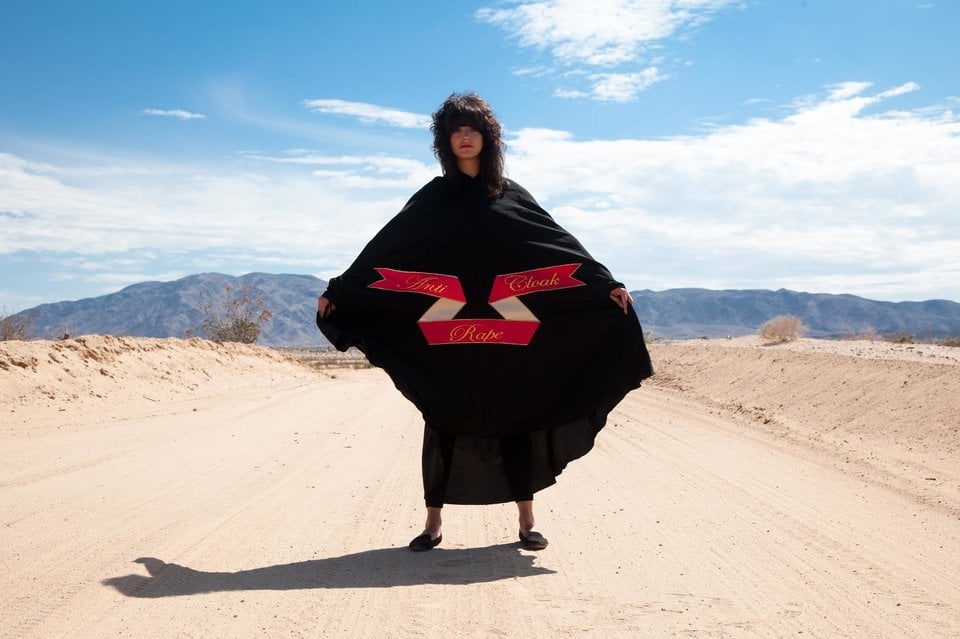
Sarah Maple wearing the Anti-Rape Cloak. Photo courtesy Sarah Maple.
2. Sarah Maple
British artist Sarah Maple’s paintings, photographs, performances, mixed media, and video works tackle ideas of identity, whether of the religious, sexual, or gender variety. The outspoken feminist approaches women’s issues in a tongue-in-cheek manner, like a self-portrait in which she holds a sign reading “The opposite to a feminist is an arshehole.” Her paintings spell out certain feminist topics quite directly: subjects include her naked self with the words “using my intelligence” covering her bikini regions; her clothed self in a white dress stained with menstrual blood, surrounded by a group of disgusted onlookers; and a pair of eyes peeking out from a full burqa, on which is a pin that says “I heart orgasms.”
Her “Anti-Rape Cloak” gained her some notoriety last year, a work she created during a residency with the “elusive network of militant feminist art activists” The Sisters of Perpetual Resistance. The residency called for an “object of nuisance,” so she created the shapeless cloak and had herself photographed wearing it in settings like the desert, the New York subway, a child-like bedroom, a parking garage, and a playground–illustrating the constant fear of violence women can face in even seemingly-innocent spaces.
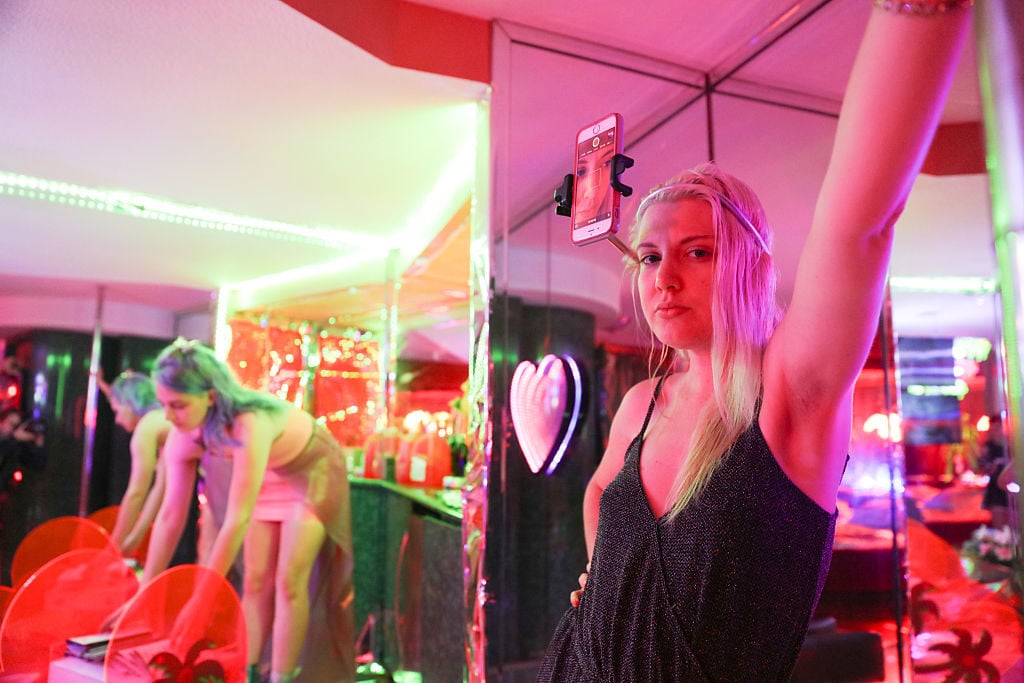
Signe Pierce at Motelscape (2015), an installation and performance by Pierce, Marina Fini, Sierra Grace and Sydney Krause. Photo courtesy Rebecca Smeyne/Getty Images.
3. Signe Pierce
Pierce has been called a “cyberfeminist,” but, as she told Bust earlier this year: “I’ve increasingly been thinking about the binary aspects of the term ‘feminist’ and how we can move past gendered terms in general.” However, she continued to explain that she is “interested in using femininity as device.”
Her work, characterized by shiny pink and purple and the glow of neon lights, spans photography, performance, and installation. A video directed by Alli Coates documenting her 2013 performance American Reflexxx finds the artist walking down a crowded boardwalk in Myrtle Beach, South Carolina, wearing a reflective mask and prompting a shocking response from the public.
Men touch her inappropriately, and groups of teenagers shout lewd questions about her gender, The social experiment is a good example of why she calls herself a “reality artist,” both bending reality and exploiting it to expose society’s ingrained assumptions about gender and sexuality.
4. Maisie Cousins
In bright hues and slimy, slippery textures, the London-based photographer snaps sensual shots of well-oiled women and evocative closeups of fruits and flowers. Her female nudes stand casually in front of the camera in dramatic lighting, while her still lifes represent oozing exotic fruits floating in, or dripping with, sickly sweet liquids.
“Her approach to making art is hedonistic and self satisfying,” reads the “about” page on her website. “She explores themes of power, femininity, nature, technology, the body and indulgence.”
When I-D asked her how she felt about feminist art becoming a trend, she said she had “Mixed feelings. One half of me thinks it’s great that feminism is breaking into the commercial world but the other half thinks, come on girls, let’s have a little imagination… This sort of imagery can be quite cis, girl-exclusive, white chicks with fashion tits. Palatable or fashionable feminism isn’t really empowering anyone.”

Petra Collins, Madelyne Beckles at the Art Production Fund gala (2016). Photo: Courtesy of Patrick McMullan.
5. Petra Collins
The photographer and performance artist aimed to hit the “reset” button on patriarchal art history when, last year, she staged the piece “Fuck Boi Funeral” with long-time collaborator Madelyne Beckles. During Art Basel 2015, the duo created the makeshift exhibition in a hotel room in order to fight for “women’s work”, and as “a celebration of the end of minimalist, objective forms of art production” championed by “cis white dude[s] who [have] the intention of silencing the “subordinate” and can’t recognize [their] own privilege, both IRL and in the art world.”
The collaborators have taken stabs at art world patriarchy in other places—like the 2016 “Art Baby” performance that had them guided around the Art Production Fund Gala on pink leashes by a performer feigning to be their “art world daddy,” coaching the innocent, young, female artists on how to best market their girlish charms.
Using exaggeration and irony, the works call out and aim to halt the belittling ways women can be treated in the art world.
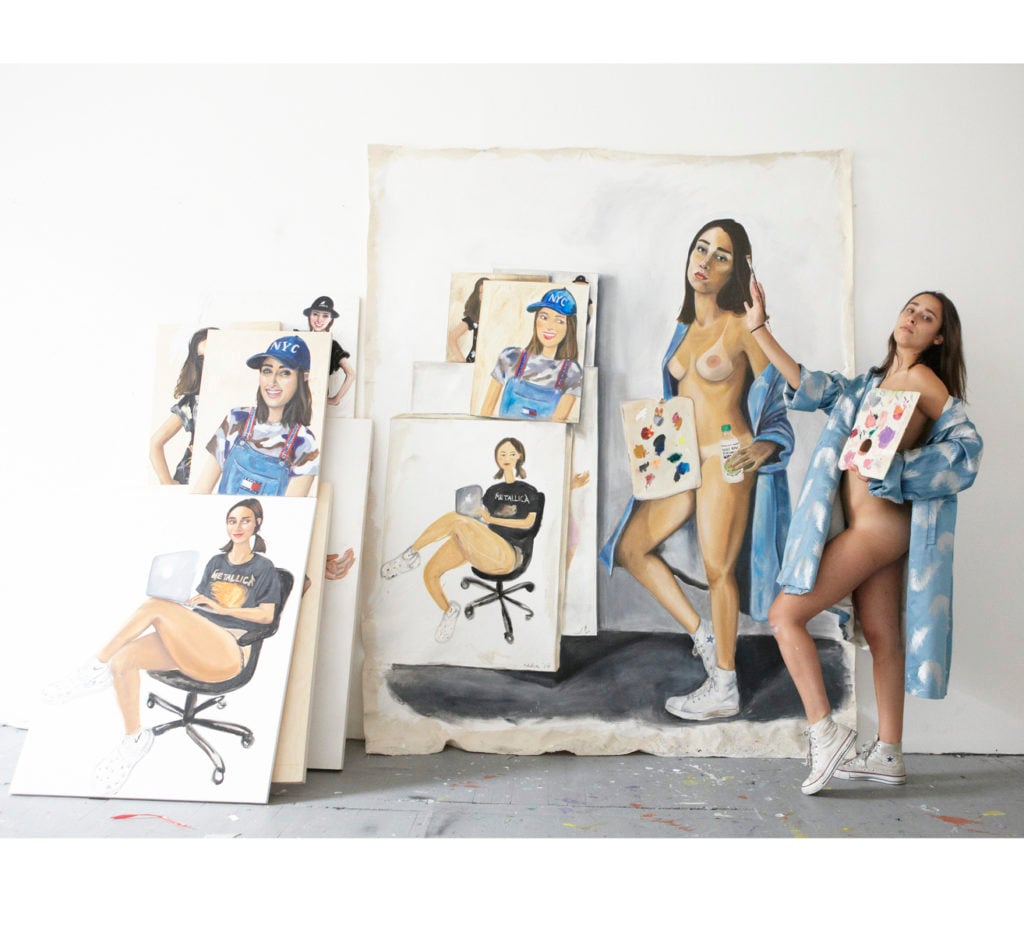
Chloe Wise with self-portraits. Photo courtesy Chloe Wise.
6. Chloe Wise
Best known for her bread bags that pinned designer labels and handbag finishings on hyperrealistic sculptures of bagels, challah, and gooey paninis, Chloe Wise takes an ironic stance on consumer culture in her work. Her “irregular tampons” series consists of a fake tampon brand that creates ridiculous “handcrafted” feminine hygiene products “for irregular girls,” lampooning tired trends like quinoa hippies, seapunk, and normcore while side-eyeing capitalistic ploys targeted at women.
Every single work on paper on her website appears to be a charcoal rendition of an iPhone selfie, reflecting either narcissism or, more optimistically, radical self-acceptance. Her paintings depict naked women posing suggestively with phallic vegetables and branded junk food, some accompanied by dispatches from the world of online dating sites.
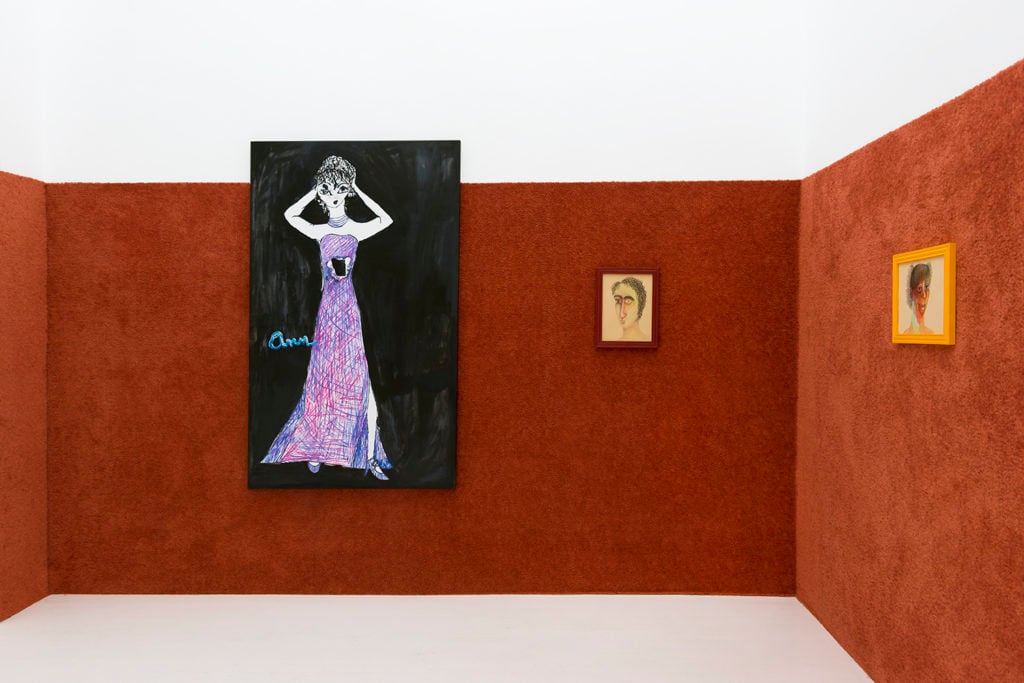
Installation view, Ann Hirsch, “Dr. Guttman’s Office” (2016) at Smart Objects. Photo courtesy Smart Objects.
7. Ann Hirsch
The video-, and performance artist tackles female representation straightforwardly, if not brashly. From appearing on a VH1 reality show to baring her most intimate parts on video, Hirsch isn’t afraid to confront deepest anxieties. Her video work’s raw, grainy quality often feels like a personal blog, a result of the artist growing up with AOL chatrooms and using the internet as a medium.
Her work revisits her childhood self as she deconstructs the way she was taught to act as a woman: a 2016 exhibition at Smart Objects in LA revisits a series of drawings she made at a childhood therapist’s office. “Then and now, I continually represent women—women’s bodies, women’s clothes, and, more recently, my own female genitalia—as a way to reconcile my own position as a woman in a complex, often hostile world. How is a woman supposed to appear? And how do I fit into that?”
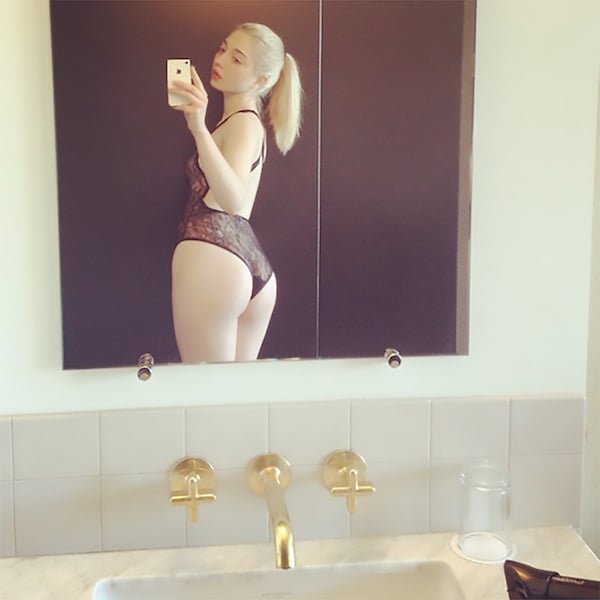
Amalia Ulman, Excellences & Perfections (Instagram Update, 8th July 2014),(#itsjustdifferent) (2015). Photo: Courtesy the artist and Arcadia Missa.
8. Amalia Ulman
Ulman has come to be known as “the instagram artist” after her breakthrough 2014 performance “Excellences and Perfections,” a scripted life makeover in three parts that played out on her Instagram and Facebook accounts.
“I wanted to prove that femininity is a construction, and not something biological or inherent to any woman… The joke was admitting how much work goes into being a woman and how being a woman is not a natural thing. It’s something you learn,” she told the Telegraph about the work.
“Excellences and Perfections” has been archived by Rhizome at the New Museum and exhibited at the Tate Modern, but the landmark performance isn’t the extent of the artist’s work in deconstructing gender roles. A satirical essay and video, The Future Ahead – Improvements for the further masculinization of prepubescent boys (2014) is a narrated powerpoint presentation on Justin Bieber’s puberty and transition from a child in the public eye to a sexualized young man.
It ends with the statement, “All bodies are ambiguous. What to do when you see someone on the street and you can’t tell if they are a man or a woman? NOTHING.”
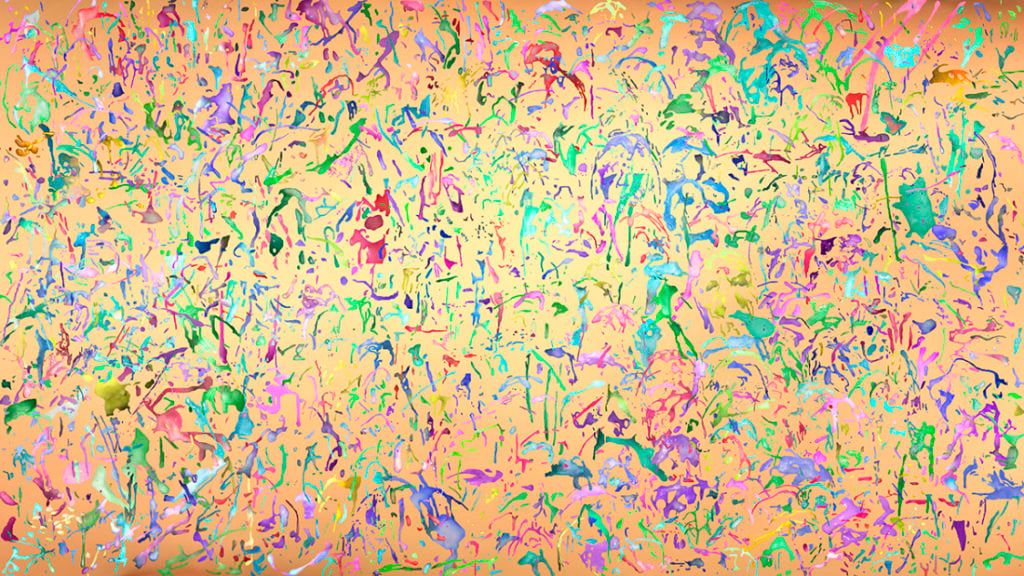
Faith Holland, Ookie Canvas, (2015). Image courtesy the artist.
9. Faith Holland
Faith Holland scrutinizes representations of sexuality and gender construction in Hollywood, online media, and pornography, often using her own body as a tool or subject. Her series “Porn Interventions,” originally uploaded to the Porn website RedTube, subverted smut-viewers expectations, finding the artist, for example, licking the camera or shaving her legs rather than engaging in illicit acts.
“Ookie Canvases” is a series of digital paintings using forms of splashes of semen from pornography and emailed to her through an open call. “By using cum shots, I can appropriate the phallus in order to infiltrate a male-dominated medium,” she explains on her website.
About her brand of feminism, she told I-D, “allowing women to feel comfortable and own their own sexuality is the first step and I think it’s one that can be traditionally ‘sexy’ (Nicki Minaj is a fantastic example of a woman who is not necessarily redefining sexy but who is centralizing her own pleasure) or it can be about opting out of performing sexiness.”

Installation view of Marriane Vlaschits, “a disturbance travelling through a medium” (2016) at Duve, Berlin. Photo courtesy Duve.
10. Marianne Vlaschits
The Austrian artist is a dreamer, making colorful work about imagined worlds. Her recent exhibition, “A Disturbance Travelling Through a Medium” at DUVE in Berlin was a feminist vision of a space-age future, a matriarchal society created by turning the gallery into a spaceship lined with pleasantly-pink walls, cutesy paintings of aliens “Gamma Rays,” and astronaut Ellen Ripley, surrounded four central panels of womanoid creatures in blue metallic coveralls.
In her own words, her work “deals with endless longing for perfect beauty and the quest for the exotic. Her interest lies in the study of the human body and mankind’s hidden desires.”